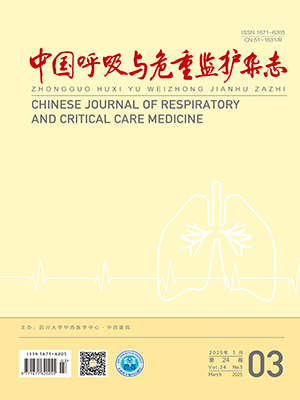| 1. |
Gao R, Cao B, Hu Y, et al. Human infection with a novel avian-origin influenza A (H7N9) virus. N Engl J Med, 2013, 368:1888-1897.
|
| 2. |
Epstein SL.Prior H1N1 influenza infection and susceptibility of Cleveland Family Study participants during the H2N2 pandemic of 1957:an experiment of nature. J Infect Dis, 2006, 193:49-53.
|
| 3. |
Sridhar S, Begom S, Bermingham A, et al.Cellular immune correlates of protection against symptomatic pandemic influenza. Nat Med, 2013, 19:1305-1312.
|
| 4. |
Duvvuri VR, Duvvuri B, Alice C, et al.Preexisting CD4+ T-cell immunity in human population to avian influenza H7N9 virus:whole proteome-wide immunoinformatics analyses. PLoS One, 2014, 9:e91273.
|
| 5. |
Quinones-Parra S, Grant E, Loh L, et al.Preexisting CD8+ T-cell immunity to the H7N9 influenza A virus varies across ethnicities. Proc Natl Acad Sci U S A, 2014, 111:1049-1054.
|
| 6. |
van de Sandt CE, Kreijtz JH, de Mutsert G, et al.Human cytotoxic T lymphocytes directed to seasonal influenza A viruses cross-react with the newly emerging H7N9 virus. J Virol, 2014, 88:1684-1693.
|
| 7. |
Wang Z, Wan Y, Qiu C, et al.Recovery from severe H7N9 disease is associated with diverse response mechanisms dominated by CD8+ T cells. Nat Commun, 2015, 6:6833.
|
| 8. |
La Gruta NL, Turner SJ.T cell mediated immunity to influenza:mechanisms of viral control. Trends Immunol, 2014, 35:396-402.
|
| 9. |
Zhang W, Du Y, Su Z, et al.IMonitor:A Robust Pipeline for TCR and BCR repertoire analysis. Genetics, 2015, 201:459-472.
|
| 10. |
Messaoudi I, Guevara-Patino JA, Dyall R, et al.Direct link between mhc polymorphism, T cell avidity, and diversity in immune defense. Science, 2002, 298:1797-1800.
|
| 11. |
Gearhart PJ.Immunology:the roots of antibody diversity. Nature, 2002, 419:29-31.
|
| 12. |
Brawand P, Cerottini JC, MacDonald HR.Hierarchal utilization of different T-cell receptor Vbeta gene segments in the CD8+-T-cell response to an immunodominant Moloney leukemia virus-encoded epitope in vivo. J Virol, 1999, 73:9161-9169.
|
| 13. |
Hughes MM, Yassai M, Sedy JR, et al. T cell receptor CDR3 loop length repertoire is determined primarily by features of the V(D)J recombination reaction. Eur J Immunol, 2003, 33:1568-1575.
|
| 14. |
Miqueu P, Guillet M, Degauque N, et al.Statistical analysis of CDR3 length distributions for the assessment of T and B cell repertoire biases. Mol Immunol, 2007, 44:1057-1064.
|
| 15. |
Strutt TM, McKinstry KK, Marshall NB, et al.Multipronged CD4+ T-cell effector and memory responses cooperate to provide potent immunity against respiratory virus. Immunol Rev, 2013, 255:149-164.
|
| 16. |
Harty JT, Badovinac VP.Shaping and reshaping CD8+ T-cell memory. Nat Rev Immunol, 2008, 8:107-119.
|
| 17. |
Badovinac VP, Porter BB, Harty JT.Programmed contraction of CD8+ T cells after infection. Nat Immunol, 2002, 3:619-626.
|
| 18. |
Richards KA, Chaves FA, Sant AJ.The memory phase of the CD4 T-cell response to influenza virus infection maintains its diverse antigen specificity. Immunology, 2011, 133:246-256.
|
| 19. |
Crotty S, Ahmed R.Immunological memory in humans. Semin Immunol, 2004, 16:197-203.
|
| 20. |
Lewis SM.The mechanism of V(D)J joining:lessons from molecular, immunological, and comparative analyses. Adv Immunol, 1994, 56:27-150.
|
| 21. |
Yang J, Chen J, Mao H, et al.Skewed T-cell receptor beta chain variable gene (TCRBV) usage among different clinical types of patients with chronic HBV infection. FEMS Immunol Med Microbiol, 2012, 65:448-455.
|
| 22. |
Marrero I, Hamm DE, Davies JD.High-throughput sequencing of islet-infiltrating memory CD4+ T cells reveals a similar pattern of TCR Vbeta usage in prediabetic and diabetic NOD mice. PLoS One, 2013, 8:e76546.
|
| 23. |
Costa AI, Koning D, Ladell K, et al.Complex T-cell receptor repertoire dynamics underlie the CD8+ T-cell response to HIV-1. J Virol, 2 015, 89:110-119.
|
| 24. |
Turner SJ, La Gruta NL, Kedzierska K, et al.Functional implications of T cell receptor diversity. Curr Opin Immunol, 2009, 21:286-290.
|
| 25. |
Jost L.Partitioning diversity into independent alpha and beta components. Ecology, 2007, 88:2427-2439.
|
| 26. |
Birnbaum ME, Dong S, Garcia KC.Diversity-oriented approaches for interrogating T-cell receptor repertoire, ligand recognition, and function. Immunol Rev, 2012, 250:82-101.
|
| 27. |
Goronzy JJ, Weyand CM.T cell development and receptor diversity during aging. Curr Opin Immunol, 2005, 17:468-475.
|
| 28. |
Goronzy JJ, Lee WW, Weyand CM.Aging and T-cell diversity. Exp Gerontol, 2007, 42:400-406.
|
| 29. |
Yager EJ, Ahmed M, Lanzer K, et al.Age-associated decline in T cell repertoire diversity leads to holes in the repertoire and impaired immunity to influenza virus. J Exp Med, 2008, 205:711-723.
|
| 30. |
Lanzer KG, Johnson LL, Woodland DL, et al.Impact of ageing on the response and repertoire of influenza virus-specific CD4 T cells. Immun Ageing, 2014, 11:9.
|




